The Opium War Experience: Historical Sites That Tell a Story
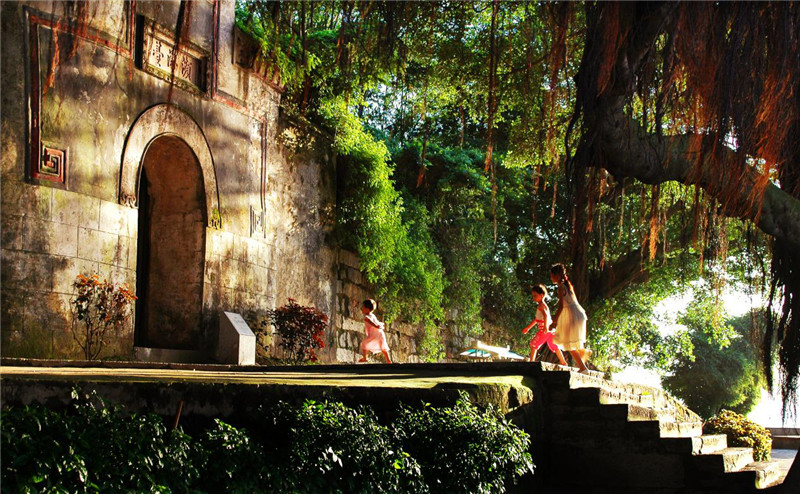
An Essential Guide to Visiting Opium War Sites
The Opium Wars, two pivotal conflicts in the mid-19th century, forever altered the course of Chinese history and its relationship with the West. As you embark on a journey to explore the remnants of this tumultuous era, you’ll find yourself traversing not just landscapes, but also the echoes of a time marked by colonial ambition, cultural clash, and profound change. The sites associated with these wars are steeped in history, offering a rich tapestry of stories and lessons that resonate even today.
From the bustling streets of Guangzhou, where the first shots were fired over trade disputes, to the solemn halls of Beijing where treaties were signed under duress, each location tells its own tale of resilience and transformation. As an international traveler, you’ll have the unique opportunity to witness firsthand the physical remnants of this historical saga—ancient forts, treaty ports, and memorials that pay homage to those who lived through these events.
In this guide, we’ll navigate through some of the most significant Opium War sites across China. Whether you are a history enthusiast, a cultural explorer, or simply curious about the past, these sites will provide a compelling glimpse into a chapter that reshaped a nation and influenced global dynamics. Prepare to immerse yourself in the sights and stories that define this complex legacy, and gain a deeper understanding of how the Opium Wars continue to shape contemporary China.
In This Guide
- An Essential Guide to Visiting Opium War Sites
- The Rich History and Legends of Opium War Sites
- Main Highlights: What You Absolutely Can’t Miss
- Planning Your Visit: A Practical Guide
- Tickets: Prices, Booking, and Tips
- How to Get There: A Complete Transportation Guide
- Local Cuisine and Accommodation Nearby
- Frequently Asked Questions
- Final Thoughts on Your Trip
The Rich History and Legends of Opium War Sites
The Opium Wars, a pivotal chapter in China’s 19th-century history, are steeped in rich narratives that echo through various sites across the country. These locations not only serve as reminders of a tumultuous period but also embody the complex interactions between East and West. For international travelers, exploring these sites offers an opportunity to delve into the history and legends surrounding the conflicts that reshaped China and its relationship with the world.
The First Opium War (1839-1842)
The First Opium War ignited out of China’s fervent attempts to eradicate the opium trade that had taken a devastating toll on its society. The conflict began in 1839 when Lin Zexu, a Chinese scholar and official, took decisive action against British merchants by confiscating and destroying over 20,000 chests of opium in Guangzhou (Canton). This act of defiance not only fueled British military retaliation but also marked the beginning of a long struggle against foreign imperialism.
Travelers can visit the city of Guangzhou, where the opium trade flourished, and walk along the historic streets that once bustled with merchants and traders. The site of Lin Zexu’s confiscation, now a park, features statues and monuments celebrating his efforts to combat the opium crisis. The poignant history of the area serves as a reminder of the heavy cost of addiction and the socio-economic upheaval that followed.
The Treaty of Nanjing
Following a series of military victories, the British forces captured Nanjing in 1842, leading to the signing of the Treaty of Nanjing—China’s first unequal treaty. This landmark agreement required China to cede Hong Kong Island to Britain, open five additional ports to foreign trade, and pay a substantial indemnity. Today, Hong Kong stands as a vibrant metropolis, its skyline a testament to the city’s transformation from a small fishing village to a global financial hub.
Visitors to Hong Kong can explore the remnants of its colonial past, such as the historic buildings on the waterfront and the numerous museums that detail the city’s rich history, including its ties to the Opium Wars. The Hong Kong Museum of History showcases this narrative, providing insights into the cultural and historical changes that have shaped the region.
The Second Opium War (1856-1860)
The Second Opium War erupted amid the Qing dynasty’s struggles against internal rebellions, notably the Taiping Rebellion. This phase of conflict saw the British and French forces seeking to expand their commercial privileges and assert their dominance further. The notorious Arrow Incident, where a British ship was boarded by Chinese officials, served as a catalyst for renewed hostilities.
Key sites from the Second Opium War include the Dagu Forts near Tianjin, where the allied forces faced fierce resistance while attempting to advance towards Beijing. The fortifications have been preserved, allowing visitors to appreciate the strategic significance of this location. Walking through the remnants of the Dagu Forts, travelers can reflect on the fierce confrontations that took place and the broader implications for China’s sovereignty.
A Legacy of Change
The Opium Wars ultimately marked the beginning of an era characterized by unequal treaties and foreign encroachments that would have lasting effects on the Qing dynasty and Chinese society. The introduction of Western ideas and technologies transformed urban landscapes, leading to the establishment of treaty ports that became cosmopolitan centers of trade and culture, such as Shanghai and Tianjin.
In Shanghai, the Bund serves as a historical promenade where visitors can admire the architectural legacy of the foreign concession era, a direct result of the Opium Wars. The juxtaposition of Western-style buildings alongside traditional Chinese architecture tells a story of cultural exchange and conflict.
Conclusion
From the bustling streets of Guangzhou to the bustling harbor of Hong Kong, the sites associated with the Opium Wars offer a rich tapestry of history and legends. International travelers exploring these locations not only gain insights into a critical period in Chinese history but also encounter stories of resilience, resistance, and the enduring impact of these events on modern China. Each site serves as a poignant reminder of the past, inviting visitors to reflect on the complexities of cultural interactions and the profound changes that shaped a nation.
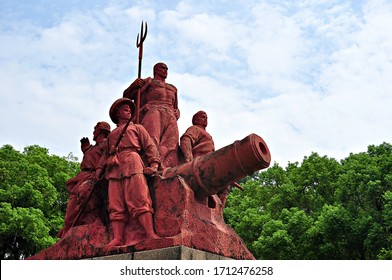
Opium War Sites.
Main Highlights: What You Absolutely Can’t Miss
Exploring the remnants of the Opium Wars offers a profound glimpse into a pivotal period in Chinese history, marked by conflict, cultural upheaval, and the struggle for sovereignty. Here’s a guide to the main highlights you absolutely can’t miss while visiting key Opium War sites:
1. The Old Canton (Guangzhou)
- Significance: As the epicenter of the first Opium War, Guangzhou (Canton) was where British merchants traded opium for Chinese goods, leading to widespread addiction and social issues.
- Must-See: Visit the site of the Humen Fortress, where the Qing dynasty attempted to regulate the opium trade. The impressive fortifications give insight into the military responses of the time.
2. The Treaty of Nanjing Memorial
- Location: Nanjing, Jiangsu Province
- Key Feature: This memorial commemorates the signing of the Treaty of Nanjing in 1842, which ended the first Opium War and ceded Hong Kong to Britain.
- What to Explore: Examine the exhibits detailing the treaty’s implications, which marked the beginning of China’s “Century of Humiliation.”
3. Hong Kong
- Historical Context: Acquired by the British after the first Opium War, Hong Kong became a critical trading port and a symbol of colonialism in China.
- Highlights: Explore the Hong Kong Museum of History, where you can delve into exhibits about the Opium Wars and their impact on the region. Don’t miss the Victoria Peak, offering panoramic views of the city that illustrate its rapid growth post-war.
4. Beijing’s Summer Palace
- Connection: The Summer Palace was a site of diplomatic negotiations during the Second Opium War (1856-1860).
- What to Do: Stroll through the lush gardens and lakes while reflecting on the foreign encroachments that led to the destruction of this beautiful site during the war.
5. Dagu Forts
- Location: Near Tianjin
- Historical Importance: These forts were the scene of fierce battles during the Second Opium War and represent the Qing dynasty’s attempts to defend against foreign aggression.
- Visit: Take a guided tour to learn about the strategic significance of these forts and witness their remnants, which speak volumes about the conflicts that took place here.
6. Tianjin Treaty Ports
- Key Locations: The city of Tianjin was opened as a treaty port following the Second Opium War.
- Highlight: Explore the Tianjin Foreign Concession Area, where colonial architecture tells stories of the international presence in China post-war.
7. Lin Zexu Memorial
- Location: Fuzhou, Fujian Province
- Who Was He: Lin Zexu was a Qing official renowned for his staunch opposition to the opium trade, famously destroying large quantities of opium in 1839.
- What to See: The memorial dedicated to Lin Zexu serves as a reminder of resistance against foreign influence and the importance of sovereignty.
8. The International Opium Museum
- Location: Macao
- What You’ll Discover: This unique museum explores the historical context of the opium trade, its effects on Chinese society, and the broader implications for international relations.
- Engagement: Participate in interactive exhibits that highlight the complexities of the opium trade and its legacy.
9. Shanghai’s Bund
- Historical Context: After the Opium Wars, Shanghai emerged as a major trading hub, influenced heavily by foreign powers.
- What to Experience: Walk along the Bund to see the colonial-era architecture, a testament to the city’s transformation and the lasting impact of foreign trade.
10. The British Consulate in Shanghai
- Significance: The consulate was a center for British diplomacy and commerce in a city transformed by the Opium Wars.
- Explore: Guided tours often provide insights into the operations of foreign officials and the treaties that shaped modern Shanghai.
Visiting these sites will give you a comprehensive understanding of the Opium Wars’ historical context and their lasting impact on China and its people. Each location tells a story of resilience, conflict, and change, allowing international travelers to appreciate the complexities of this period in history.
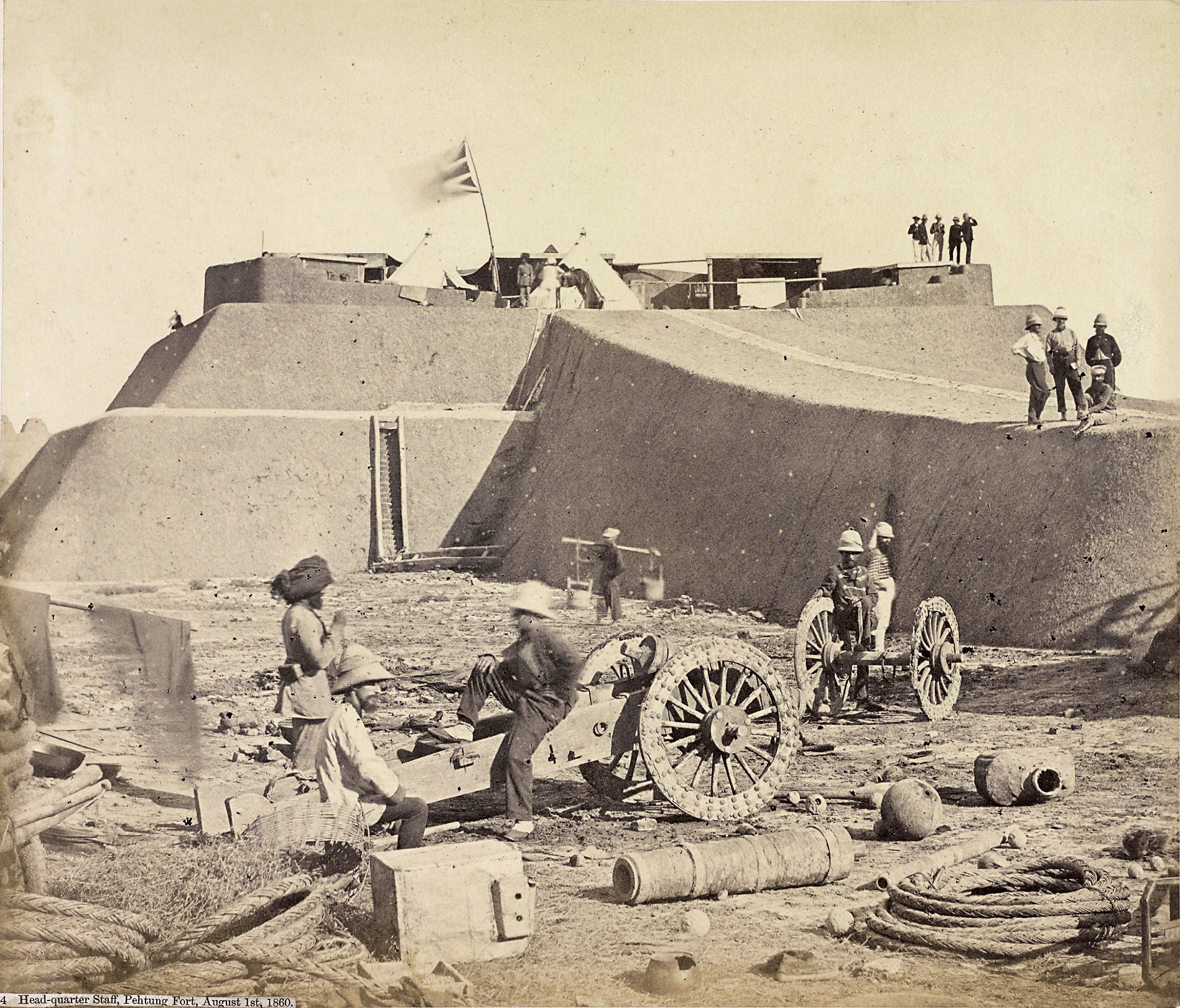
Opium War Sites.
Planning Your Visit: A Practical Guide
Exploring the historical sites of the Opium Wars offers travelers a unique glimpse into a pivotal moment in China’s history. This guide will provide essential information to help you make the most of your visit to the significant locations linked to these conflicts.
Best Times to Visit
The ideal time to explore Opium War sites is during the spring (March to May) and autumn (September to November). These seasons typically offer mild weather and fewer crowds, allowing for a more enjoyable experience. Avoid visiting during the Chinese New Year (January or February) and major public holidays, when tourist attractions can be especially crowded.
Getting There
Most Opium War sites are located in major cities such as Guangzhou (Canton), Hong Kong, and Beijing.
-
Guangzhou: The city is well connected via train and air. The Guangzhou Baiyun International Airport serves numerous international flights. From the airport, you can take a taxi or the metro to reach the city center.
-
Hong Kong: Easily accessible from international destinations, Hong Kong International Airport is a major hub. From there, you can take the Airport Express train or a taxi to reach the city.
-
Beijing: As the capital city, Beijing is reachable by flights from most major cities worldwide. The Beijing Capital International Airport is well-connected to the city via the Airport Express train and taxis.
Key Sites to Visit
1. The Museum of the First Opium War (鸦片战争博物馆) – Guangzhou
Located in Humen, a district of Guangzhou, this museum commemorates the first Opium War. Exhibits include historical artifacts, documents, and multimedia displays that narrate the events leading to the conflict.
- Getting There: Take the metro to Humen Station, then a short taxi ride to the museum.
- Hours: Open daily from 9 AM to 5 PM. Entry is free but may require a reservation during peak times.
2. The Treaty of Nanjing Memorial Hall (南京条约纪念馆) – Nanjing
This site commemorates the Treaty of Nanjing, which ended the first Opium War. The hall showcases artifacts and provides a detailed account of the treaty’s implications for China.
- Getting There: Accessible via high-speed train or domestic flights from Guangzhou or Shanghai.
- Hours: Open Tuesday to Sunday, 9 AM to 4:30 PM. Admission is free.
3. Statue of Lin Zexu – Guangzhou
Lin Zexu was a key figure in the Chinese resistance against opium. This statue, located near the site of his historic actions against the opium trade, is a popular photo spot.
- Getting There: Located in the city center, it’s easily reachable by metro or taxi.
- Hours: Open all day.
4. Hong Kong Museum of History (香港历史博物馆) – Hong Kong
This museum has exhibitions detailing the Opium Wars and their impact on Hong Kong. It provides a broader context of the conflicts and their aftermath.
- Getting There: Take the MTR to Tsim Sha Tsui Station, and it’s a short walk from there.
- Hours: Open daily from 10 AM to 6 PM. Closed on Tuesdays. Admission is free.
5. The Old City Walls – Beijing
While not directly related to the Opium Wars, the remnants of the old city walls provide a backdrop to understanding the historical context of foreign encroachment during the Qing dynasty.
- Getting There: Easily accessible by public transport; multiple bus and subway lines serve the area.
- Hours: Open all day.
Local Etiquette
When visiting historical sites, it’s essential to be respectful. Follow local customs, avoid loud conversations, and ask permission before taking photographs of people. It’s also courteous to try to learn a few basic Mandarin phrases, which can enrich your interactions with locals.
Food and Accommodation
In cities like Guangzhou and Hong Kong, you’ll find a wide variety of dining options, from street food stalls to high-end restaurants. Try local specialties like dim sum, roast goose, and traditional Cantonese desserts.
For accommodation, consider booking hotels near major attractions for convenience. Popular areas include the bustling districts near the museums in Guangzhou and Tsim Sha Tsui in Hong Kong.
Conclusion
Visiting the sites related to the Opium Wars not only provides insight into a turbulent period in Chinese history but also allows for reflection on the lasting impacts of these events on modern China. With this practical guide in hand, you’re well-prepared to embark on a meaningful journey through this significant chapter of history. Safe travels!
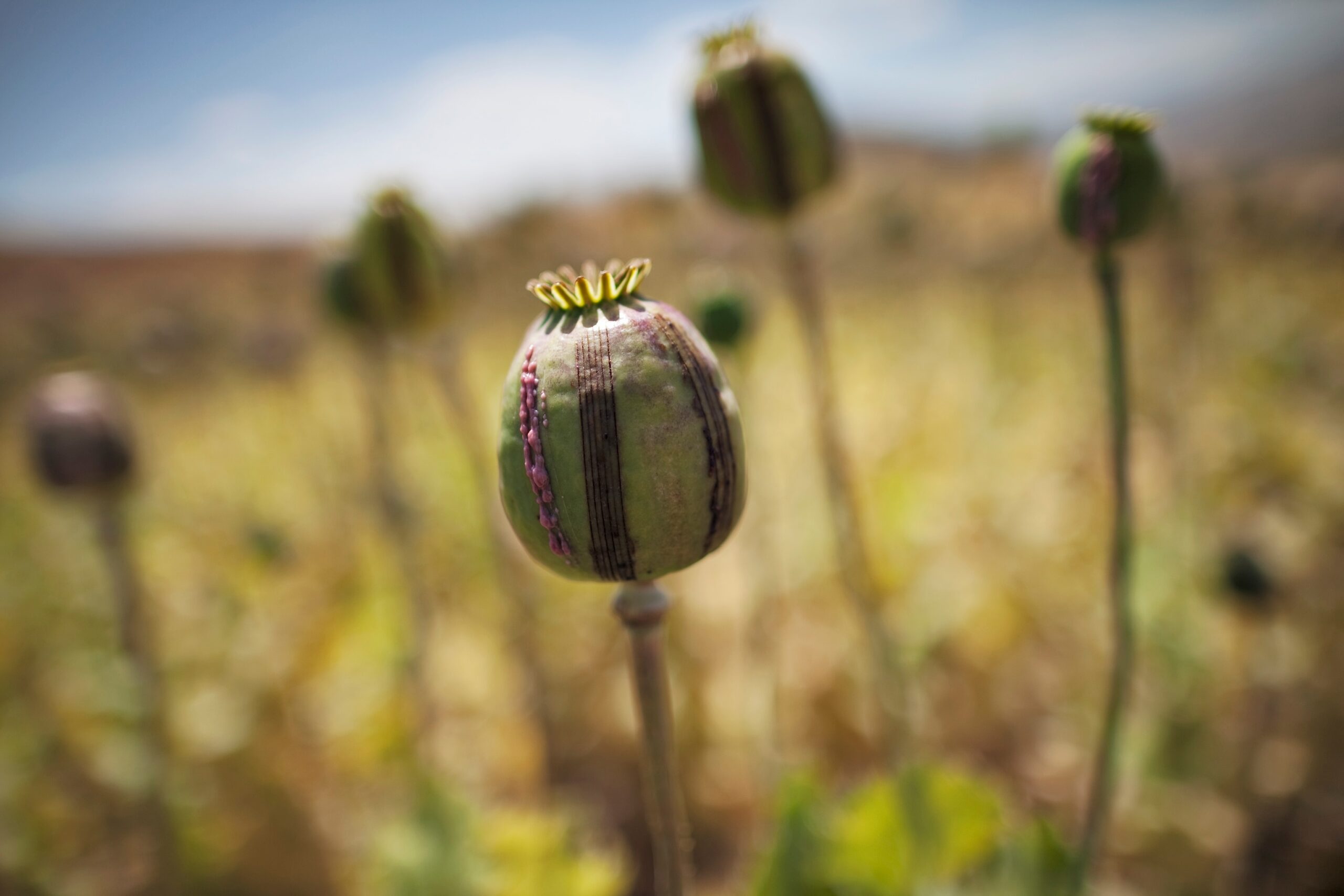
Opium War Sites.
Tickets: Prices, Booking, and Tips
Exploring the sites of the Opium Wars offers a unique glimpse into a pivotal period in Chinese history. Here’s what you need to know about ticketing, pricing, and tips for visiting these significant locations.
Ticket Information and Prices
-
General Admission: Most Opium War sites, including museums and historical landmarks, charge a nominal entrance fee, typically ranging from 30 to 100 RMB (approximately $5 to $15 USD).
-
Discounted Tickets: Students, seniors, and children often qualify for discounted rates. Always bring your identification to avail these discounts.
-
Multi-Site Passes: If you plan to visit multiple locations, consider purchasing a multi-site pass. Some cities offer bundled tickets that can save you money and time.
-
Guided Tours: Many visitors opt for guided tours that include transportation and expert commentary. Prices for these tours range from 200 to 800 RMB (about $30 to $120 USD), depending on the duration and inclusivity of the package.
-
Opening Hours: Most sites are open from 9 AM to 5 PM, but it’s advisable to check specific hours in advance, especially during public holidays when hours might vary.
Booking Tips
-
Advance Booking: For popular sites, especially during peak tourist seasons (April to October), it’s wise to book tickets in advance either online or through local travel agencies. This ensures you won’t miss out on your desired visits.
-
Check for Special Events: Some sites may host special exhibitions or events celebrating the history of the Opium Wars. Keep an eye on their official websites or social media pages for the latest updates.
-
Language Considerations: While many sites offer guides in English, it’s beneficial to check in advance. If you prefer a guide, consider pre-booking one who speaks your language.
-
Local Transport: Research transportation options to and from sites. Many locations are accessible via public transport, but taxis and rideshares can also be a convenient choice for groups or after-hours visits.
Visitor Tips
-
Wear Comfortable Shoes: Many historical sites involve walking and some have uneven terrain. Comfortable footwear will enhance your experience.
-
Stay Hydrated: Especially during the warmer months, carry a water bottle to stay hydrated as you explore.
-
Photography: Most sites allow photography, but be respectful of signs indicating areas where photography is prohibited.
-
Respectful Behavior: As these sites are steeped in historical significance, maintain a respectful demeanor. Consider the cultural and emotional weight of the locations you are visiting.
By following these guidelines, your exploration of the Opium War sites will not only be enriching but also enjoyable. Prepare to step back in time and gain a deeper understanding of this complex chapter in history.
How to Get There: A Complete Transportation Guide
Traveling to the historic sites of the Opium Wars offers a unique glimpse into a pivotal era in Chinese history. This guide will help you navigate your journey through these significant locations, whether you’re arriving in China for the first time or are a seasoned traveler.
Getting to Major Opium War Sites
1. Canton (Guangzhou)
A key battleground during the First Opium War, Guangzhou is accessible via several transportation options:
-
By Air: Guangzhou Baiyun International Airport (CAN) is well-connected with international flights. From the airport, you can take the metro (Line 3) or a taxi to the city center.
-
By Train: High-speed trains from major cities like Beijing, Shanghai, and Hong Kong arrive at Guangzhou South Railway Station. The journey from Hong Kong takes about 1 hour.
-
Local Transport: Once in Guangzhou, the metro system is efficient and affordable, making it easy to reach historical sites such as the Museum of the First Opium War.
2. Nanjing
The site of the Treaty of Nanjing, Nanjing is steeped in history:
-
By Air: Nanjing Lukou International Airport (NKG) serves both domestic and international flights. Take the airport shuttle or a taxi to reach downtown.
-
By Train: Nanjing is a major hub for high-speed trains, with frequent services from cities like Shanghai (about 1.5 hours) and Beijing (approximately 3 hours).
-
Local Transport: The city’s metro and bus services are convenient for reaching landmarks such as the Nanjing Yangtze River Bridge and the Nanjing Massacre Memorial Hall.
3. Beijing
As a significant location during the Second Opium War, Beijing is easily accessible:
-
By Air: Beijing Capital International Airport (PEK) and the newly opened Beijing Daxing International Airport (PKX) both offer international and domestic flights.
-
By Train: High-speed trains connect Beijing to various cities, including Shanghai (around 4.5 hours) and Guangzhou (approximately 8 hours).
-
Local Transport: The Beijing subway is extensive, allowing easy travel to key historical sites like the Old Summer Palace and the Summer Palace, both linked to the Opium Wars.
4. Hong Kong
Captured during the First Opium War, Hong Kong is a vibrant city with easy access to its historical sites:
-
By Air: Hong Kong International Airport (HKG) is a major international hub. The Airport Express train offers a quick ride to Central Hong Kong.
-
By Ferry: If traveling from Macau or Guangzhou, ferries are a scenic and popular option.
-
Local Transport: The MTR (Mass Transit Railway) is efficient for navigating the city. Notable sites include the Hong Kong Museum of History and the site of the signing of the Treaty of Nanjing.
Tips for Visiting Opium War Sites
-
Guided Tours: Consider joining guided tours that focus on the Opium Wars to gain deeper insights from knowledgeable guides.
-
Language Barrier: While major cities have English signage, learning a few basic Mandarin phrases can enhance your experience and interactions with locals.
-
Cultural Sensitivity: Be aware of the historical significance of these sites and approach discussions about the Opium Wars with sensitivity.
-
Weather Considerations: The best time to visit is during spring (March to May) or autumn (September to November) when the weather is pleasant.
Conclusion
Exploring the sites of the Opium Wars is not only a journey through history but also an opportunity to understand the complexities of China’s past and its relationship with the West. With convenient transportation options and rich cultural experiences awaiting you, your visit to these historical sites will undoubtedly be memorable. Safe travels!
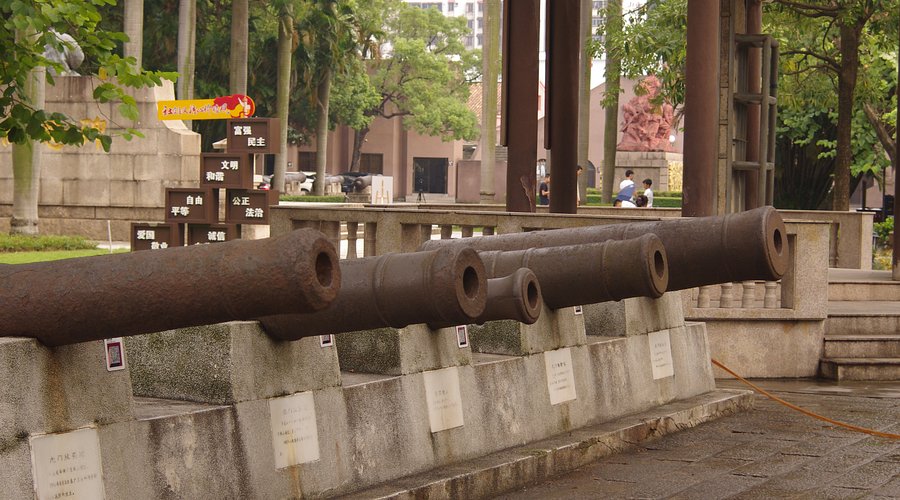
Opium War Sites.
Local Cuisine and Accommodation Nearby
Exploring the historical Opium War sites in China offers not only a glimpse into a pivotal moment in history but also a delightful opportunity to savor local cuisine and find comfortable accommodations. Here’s a guide to help you navigate the culinary and lodging options near these significant locations.
Culinary Delights
1. Guangzhou (Canton)
As the epicenter of the first Opium War, Guangzhou is renowned for its Cantonese cuisine. Be sure to try:
– Dim Sum: A must-try in any local teahouse, featuring an array of small dishes such as dumplings, buns, and pastries.
– Roast Duck: Crispy on the outside and tender inside, this dish is a staple in Cantonese gastronomy.
– Wonton Noodles: A comforting bowl of noodles topped with delicate wontons, often served in a fragrant broth.
Recommended Restaurants:
– Tian He: This upscale establishment is famous for its dim sum, offering an elegant dining experience.
– Bingsheng Pinwei: Known for its traditional Cantonese dishes, this restaurant is a favorite among locals.
2. Nanjing
Nanjing, the site of the Treaty of Nanjing, boasts a rich culinary heritage:
– Salted Duck: A local specialty, this dish features duck seasoned with spices and salt, a flavor unique to Nanjing.
– Nanjing-style Dumplings: These dumplings come with a variety of fillings and can be found at many street vendors.
Recommended Restaurants:
– Old Nanjing Salted Duck: A historic eatery known for its authentic salted duck.
– Mao’s Restaurant: Offers a mix of traditional dishes in a cozy atmosphere.
3. Beijing
As the final site of the Opium Wars, Beijing is packed with culinary experiences:
– Peking Duck: Experience the iconic dish, known for its crispy skin and succulent meat.
– Jianbing: A popular street food item, this Chinese crepe is filled with eggs, scallions, and various toppings.
Recommended Restaurants:
– Quanjude: A famous restaurant chain specializing in Peking Duck.
– Wangfujing Snack Street: A vibrant market offering various street foods, perfect for adventurous eaters.
Accommodation Options
1. Guangzhou
– The Garden Hotel: A luxurious stay with an outdoor pool and spa, located close to the city center and historical sites.
– Ramada Plaza Guangzhou: A more budget-friendly option, this hotel offers comfortable rooms and is conveniently located near public transport.
2. Nanjing
– Jinling Hotel: This five-star hotel combines modern amenities with traditional Chinese hospitality, situated near many historical sites.
– Nanjing Central Hotel: A mid-range option ideal for exploring the city, offering comfortable accommodations right in the heart of Nanjing.
3. Beijing
– The Peninsula Beijing: An opulent hotel where luxury meets cultural heritage, located near the Forbidden City and Tiananmen Square.
– Beijing 161 Wangfujing Hotel: A charming boutique hotel offering a cozy stay with easy access to local attractions and dining.
By indulging in the local cuisine and selecting comfortable accommodations, you can enhance your journey through the rich history of the Opium Wars while enjoying the vibrant culture of China. Whether you’re savoring dim sum in Guangzhou or duck in Beijing, each meal is sure to add flavor to your historical exploration.
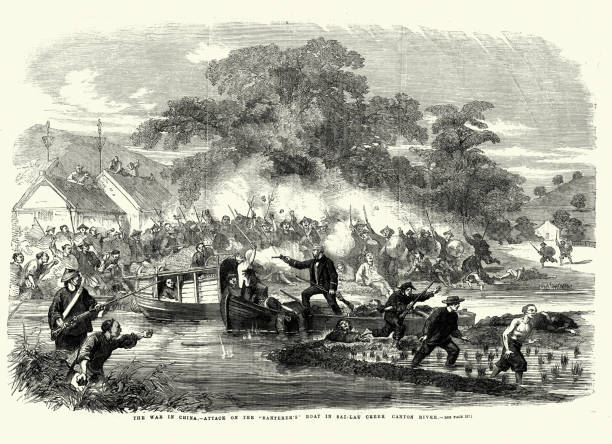
Opium War Sites.
Frequently Asked Questions
Frequently Asked Questions for Travelers to Opium War Sites
-
What are the main Opium War sites I can visit in China?
Travelers can explore several significant sites related to the Opium Wars, including the Opium War Museum in Guangzhou, the Treaty of Nanjing Memorial in Nanjing, and the historic waterfront areas of Hong Kong. Other important locations include the Dagu Forts near Tianjin and various treaty ports like Shanghai and Ningbo. -
How can I get to these sites?
Major cities like Guangzhou, Nanjing, and Shanghai are well-connected by train and air travel. Once in these cities, local public transport, taxis, or guided tours can help you navigate to the specific sites. It’s advisable to check local transportation options ahead of time. -
Are there guided tours available at Opium War sites?
Yes, many sites offer guided tours that provide historical context and insights into the events of the Opium Wars. These tours can be booked in advance through local travel agencies or at the sites themselves. Consider joining a tour for a more in-depth understanding of the historical significance. -
What is the best time of year to visit these sites?
The ideal time to visit is during the spring (April to June) and autumn (September to November) when the weather is mild. Summer can be hot and humid, while winter may bring colder temperatures, especially in northern regions. -
Are there any entry fees for visiting Opium War sites?
Entry fees vary by location. Some museums and memorials may charge a small fee, while many historical sites are free to enter. It’s wise to check the official websites or local tourist information before your visit to be prepared. -
What should I know about local customs when visiting these historical sites?
Respect for history and local culture is paramount. Dress modestly and behave appropriately, especially in memorial sites. If guided tours are available, listen to the guides and engage respectfully with the material presented. -
Can I find English-speaking guides at these sites?
Many popular tourist destinations, including Opium War sites, offer English-speaking guides. However, it’s best to confirm availability when booking a tour or upon arrival, as some less-visited sites may have limited English-speaking resources. -
What historical context should I understand before visiting?
Familiarize yourself with the basic history of the Opium Wars, including the causes, key events, and long-term consequences. Understanding the conflict can enhance your appreciation of the sites and the artifacts displayed, as well as the significant impact these events had on China’s history and its relationship with Western powers.
Final Thoughts on Your Trip
As you conclude your journey through the poignant landscapes of the Opium War sites, reflect on the rich tapestry of history that unfolds before you. Each location tells a story of conflict, resilience, and the profound transformations that shaped not only China but the world at large. The streets of Canton, the imposing forts along the Pearl River, and the echoes of treaties signed in hastily arranged negotiations are reminders of a turbulent era that catalyzed change.
Visiting these sites allows you to grasp the complexities of international relations in the 19th century, the struggles of the Qing dynasty, and the societal impact of the opium trade. Beyond the historical context, it’s an opportunity to appreciate the enduring spirit of the Chinese people and their journey towards sovereignty and modernization.
As you depart, carry with you the lessons of the past—how history informs our present and shapes our future. Let the stories of these sites inspire a deeper understanding of cultural heritage, resilience, and the importance of dialogue in fostering peace. Your exploration of the Opium War sites is not merely a trip through history; it is a pathway to understanding the interconnectedness of our global narrative. Safe travels on your next adventure!